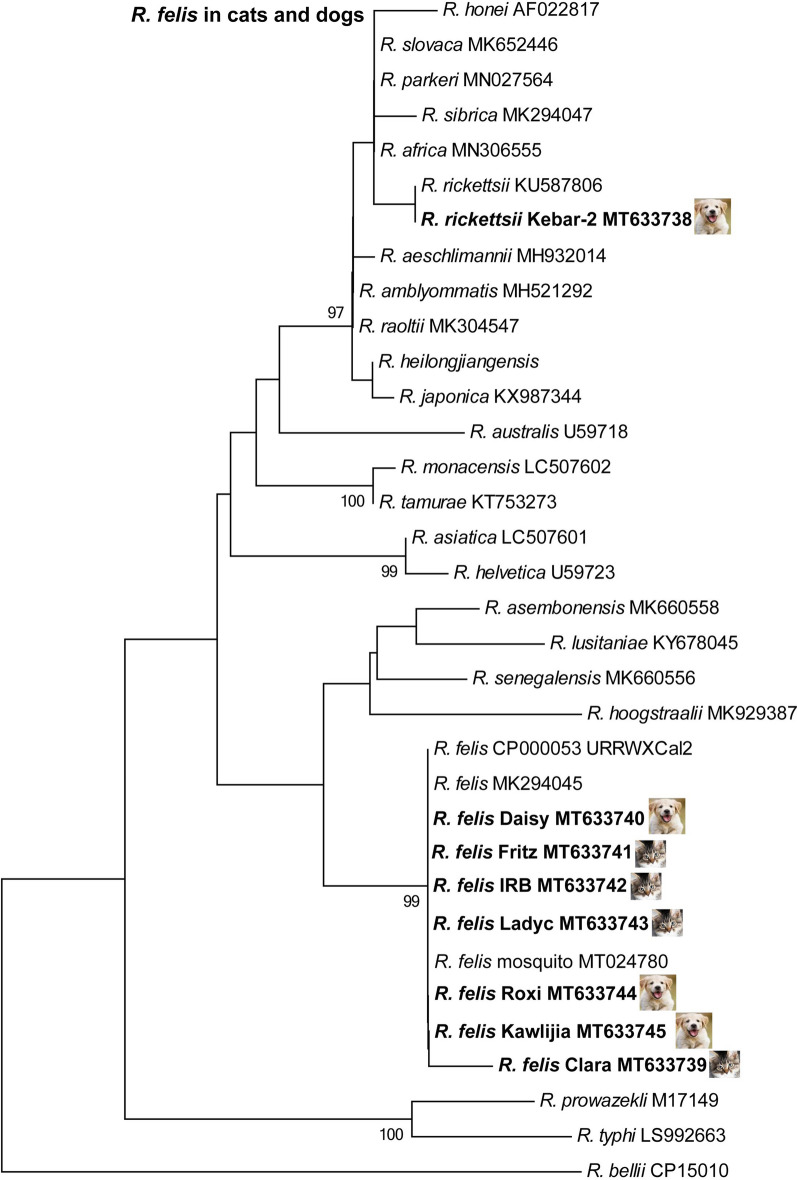- Record: found
- Abstract: found
- Article: found
Identification of Rickettsia felis DNA in the blood of domestic cats and dogs in the USA

Read this article at
Abstract
Background
The main vector and reservoir host of Rickettsia felis, an emerging human pathogen causing flea-borne spotted fever, is the cat flea Ctenocephalides felis. While cats have not been found to be infected with the organism, significant percentages of dogs from Australia and Africa are infected, indicating that they may be important mammalian reservoirs. The objective of this study was to determine the presence of R. felis DNA in the blood of domestic dogs and cats in the USA.
Methods
Three previously validated PCR assays for R. felis and DNA sequencing were performed on blood samples obtained from clinically ill domestic cats and dogs from 45 states (2008–2020) in the USA. The blood samples had been submitted for the diagnosis of various tick-borne diseases in dogs and feline infectious peritonitis virus, feline immunodeficiency virus, and Bartonella spp. in cats. Phylogenetic comparisons were performed on the gltA nucleotide sequences obtained in the study and those reported for R. felis and R. felis-like organisms.
Results
Low copy numbers of R. felis DNA (around 100 copies/ml whole blood) were found in four cats (4/752, 0.53%) and three dogs (3/777, 0.39%). The very low levels of infection in clinically ill animals is consistent with R. felis being an unlikely cause of disease in naturally infected dogs and cats. The low copy numbers we found emphasize the requirement for very sensitive PCRs in prevalence studies.
Conclusions
The low prevalence of naturally infected PCR-positive cats is further evidence that cats are unlikely to be important reservoirs of R. felis. Similarly, the low prevalence in dogs suggests they are not important reservoirs in the USA. Investigations should continue into the role other mammalian species may be playing in the epidemiology of R. felis infections.

Related collections
Most cited references33
- Record: found
- Abstract: found
- Article: not found
Tick- and flea-borne rickettsial emerging zoonoses.
- Record: found
- Abstract: found
- Article: not found
Rickettsia felis: from a rare disease in the USA to a common cause of fever in sub-Saharan Africa.
- Record: found
- Abstract: found
- Article: not found